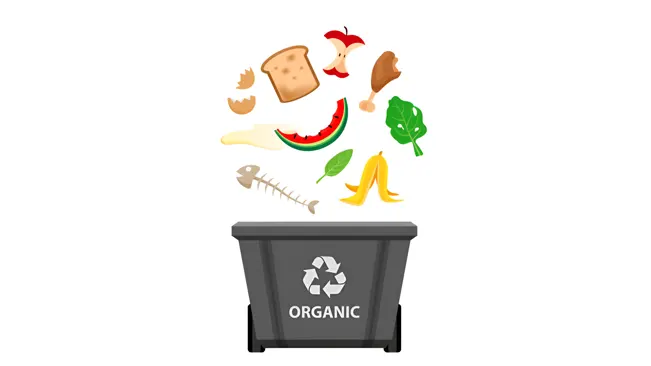10 Easy Ways to Reduce Your Carbon Footprint
- July 29, 2024
- 0 comment
In today’s environmentally conscious world, understanding your carbon footprint is crucial for promoting sustainability and combating climate change. This article explores the various components that contribute to your carbon footprint, including daily habits, energy consumption, and travel. We’ll also provide actionable strategies to reduce your impact on the planet, helping you make informed decisions that contribute to a healthier environment.
What is A Carbon Footprint?
A carbon footprint quantifies the total emissions of greenhouse gases like carbon dioxide and methane, which significantly contribute to global warming. This metric measures how much these gases are emitted by our activities, whether through direct emissions from our cars and manufacturing processes, or indirectly through the products we buy and the services we use. Typically expressed in tons of CO2 equivalent per year, a carbon footprint helps us understand the impact of our lifestyles on the planet. It encompasses everything from the electricity we use in our homes, to the food we eat, to the modes of transportation we choose.

Understanding your carbon footprint is the first step towards reducing it, as it identifies the primary sources of emissions in your daily life. For individuals, this could mean altering travel habits, improving energy efficiency at home, or choosing sustainable products. For companies, managing a carbon footprint might involve adopting cleaner technologies, enhancing supply chain logistics, or transitioning to renewable energy sources. This approach not only helps mitigate climate change but also often leads to financial savings and improved public relations. By measuring and managing our carbon footprints, we can take concrete steps towards a more sustainable future for all.
Why is it Important to Know Your Carbon Footprint?
Knowing your carbon footprint is essential because it measures the total amount of greenhouse gases you produce, primarily through carbon dioxide and methane, which are significant contributors to global warming. This calculation encompasses various aspects of daily life, from the energy used to heat and power your home to the transportation choices you make and the types of food you consume. By understanding the size and sources of your carbon footprint, you can see the direct link between your personal behaviors and broader environmental impacts, such as climate change, extreme weather conditions, and rising sea levels.

Moreover, being aware of your carbon footprint empowers you to make informed decisions that can reduce your environmental impact. For individuals, this might involve adopting more sustainable habits like using public transport, recycling, or cutting down on meat consumption. For businesses, it could lead to strategic changes such as investing in renewable energy sources or improving energy efficiency in operations. Overall, by understanding and managing your carbon footprint, you contribute to a global effort to mitigate the adverse effects of climate change, promoting a healthier planet for future generations.
10 Ways to Reduce Your Carbon Footprint
1. Recycle your materials
Recycling your materials is a crucial step toward sustainability and reducing your environmental impact. By actively participating in recycling, you contribute to the conservation of natural resources, help minimize landfill usage, and reduce the demand for raw materials. Most communities offer easy-to-use recycling services for common household items such as plastics, paper products, metals, and glass. Ensuring these materials are properly sorted and cleaned before being recycled can enhance the effectiveness of recycling processes.

Furthermore, implementing recycling practices in your daily routine supports local economies by creating jobs in the recycling and manufacturing industries, lowers greenhouse gas emissions, saves energy, and fosters a culture of responsibility and resource conservation. Educating yourself and others about proper recycling techniques can lead to more efficient recycling systems and a healthier planet.
2. Cut down on Plastic
Reducing your use of single-use plastics is a significant way to positively impact the environment and wildlife. By opting for reusable alternatives such as sturdy water bottles, metal straws, and cloth shopping bags, you can significantly cut down on waste and save money. Many communities and businesses are increasingly supporting sustainable practices by encouraging customers to bring their own containers for bulk purchases, which eliminates the need for unnecessary plastic packaging.

Additionally, participating in local beach or park cleanups is an effective way to help remove plastic pollution from these environments, protecting the natural habitats and promoting the beauty of our local areas. These efforts not only contribute to a cleaner and more sustainable environment but also foster a sense of community and raise awareness about the importance of reducing plastic waste. By making conscious choices and getting involved in community activities, you can play a crucial role in building a more sustainable future.
3. Grow Vegetables and Herbs
Starting your own garden to grow vegetables and herbs is a rewarding and practical approach to sustainability. Researching and planting local, hardy species that don’t require much water is essential, particularly in drought-prone areas. By cultivating your own tomatoes, carrots, spinach, lettuce, and beans, you not only gain access to fresh, pesticide-free produce but also reduce your dependency on commercially grown vegetables that involve extensive resources for growth and transportation.

Similarly, growing herbs like basil, mint, rosemary, and thyme in your garden or indoors in pots enhances your cooking with fresh flavors and can significantly reduce your grocery bills. This practice not only promotes a healthier lifestyle and physical activity but also offers a sense of accomplishment. Over time, maintaining a garden helps in achieving substantial savings and reducing your environmental footprint by minimizing the need for packaged goods and frequent shopping trips.
4. Plant trees
Planting trees is a powerful environmental action with multiple benefits for the planet. Trees and plants play a crucial role in absorbing carbon dioxide (CO2) from the atmosphere and releasing oxygen, which is essential for life on Earth. Beyond this, trees also capture other pollutants, significantly improving air quality.

Moreover, they help regulate water cycles and local climates by managing water flow and providing shade, which can reduce temperatures in urban areas. When you plant trees, you actively contribute to reducing your carbon footprint by aiding in the sequestration of CO2, while also enhancing local environmental conditions and resilience against climate change.
5. Conserve Water
Conserving water is an essential part of reducing your environmental impact and managing your carbon footprint. When water is used in your home, it often requires energy for heating and pumping, which contributes to higher carbon emissions. By adopting simple water conservation measures, you can significantly reduce these emissions.

Start by fixing any leaks in your home, as even a small drip can waste significant amounts of water over time. Switching to a water-saving shower head is another effective measure; these devices can dramatically reduce water usage without compromising on comfort. Additionally, turning off the tap while brushing your teeth or shaving can save gallons of water each day. These steps, while seemingly minor, contribute to substantial water conservation and energy savings.
6. Use Eco-friendly Products
Switching to Eco-friendly products, particularly in your cleaning habits, is a beneficial practice for both your health and the environment. Eco-friendly products like shampoos, detergents, and dish washing liquids are designed to minimize environmental impact. These products often feature low-phosphate formulations or are entirely phosphate-free.

Phosphates, commonly found in many cleaning agents, can be extremely harmful to aquatic ecosystems. When these chemicals enter waterways, they encourage the excessive growth of algae, which depletes oxygen levels in water bodies, adversely affecting fish and other aquatic organisms. By choosing Eco-friendly options, you contribute to reducing this type of water pollution, helping to preserve our rivers, lakes, and oceans.
7. Improve Home Energy Efficiency
Improving your home’s energy efficiency is a critical step towards reducing your carbon footprint and achieving long-term financial savings. One effective way to enhance energy efficiency is through the adoption of Eco-friendly technologies and materials during home renovations or improvements. For instance,

Installing advanced, Eco-friendly insulation in your home can significantly reduce the need for heating and cooling, thereby cutting down on energy consumption and costs. Similarly, opting for solar power systems can drastically decrease your reliance on conventional energy sources. These solar systems convert sunlight into electricity, providing a clean, renewable energy source that can power your entire home, further reducing your environmental impact.
8. Minimize Food Waste
Minimizing food waste is a crucial aspect of reducing one’s environmental impact and combating climate change. When food is discarded and sent to landfills, it decomposes anaerobically (without oxygen), producing methane, a potent greenhouse gas that significantly contributes to global warming. To mitigate this, individuals can adopt practices like composting organic food scraps.

Composting not only prevents the production of methane by facilitating aerobic decomposition but also produces nutrient-rich soil that can enhance garden health. Additionally, being mindful of portion sizes at restaurants and opting for takeaways only when necessary can further help in reducing the amount of food that ends up as waste. Storing food properly, in cool, dry cupboards or refrigerators, also extends the lifespan of perishable items, reducing the likelihood of spoilage.
9. Fertilize your Garden
Taking care of your garden is not only beneficial for its aesthetic and production value but also for environmental health, especially during the colder months when plants are more vulnerable. One of the most effective ways to nourish your garden is by using compost made from organic waste and vegetable off cuts from your kitchen. Composting these materials not only reduces the amount of waste sent to landfills but also transforms them into rich, nutritious soil that can significantly enhance the health of your plants.

Compost acts as a natural fertilizer that improves soil structure, retains moisture, and introduces beneficial microorganisms that help plants grow healthy and strong. By incorporating compost regularly into your garden, you provide your plants, lawns, and trees with a continuous supply of essential nutrients, promoting vigorous growth and resilience against pests and diseases.
10. Start walking or Biking
Incorporating walking or biking into your daily routine is a highly effective method for reducing CO2 emissions, particularly for short trips that might otherwise be made by car. Vehicles are significant contributors to carbon emissions, and by choosing to walk or bike, you not only reduce these emissions but also alleviate traffic congestion and the demand for parking spaces.

Walking a mile can take less than 20 minutes, making it a convenient option for quick errands or daily commutes to places like the local grocery store or post office. Additionally, biking and walking are excellent forms of cardiovascular exercise, promoting heart health and increasing physical fitness. These activities also offer a chance to enjoy the outdoors and decompress, providing mental health benefits alongside the physical ones.
How is My Carbon Footprint Measured?
Direct Emissions
- Transport: This includes emissions from vehicles you drive, such as cars and motorcycles. Emissions are calculated based on fuel consumption and the type of fuel used.
- Home Energy Use: Emissions from heating, cooling, and electricity use in your home are counted here. The type of energy source (e.g., natural gas, oil, coal, or electricity from the grid) and the amount used determine the GHGs emitted.
Indirect Emissions
- Purchased Goods and Services: The production of everything you buy—from food to electronics and clothing—generates emissions. Life Cycle Assessment (LCA) methodologies are often used to estimate these emissions, taking into account raw material extraction, manufacturing, distribution, use, and disposal.
- Food Consumption: The type of diet you have plays a significant role. Meat and dairy, especially from ruminants like cows and sheep, have high GHG emissions due to methane production during digestion and the energy-intensive nature of meat production.
- Travel and Leisure: Emissions from air travel, hotel stays, and other leisure activities are also included. These are calculated based on factors such as the distance traveled and the mode of transportation.
Conclusion
Understanding and managing your carbon footprint is crucial for the well-being of our planet. By identifying the sources of greenhouse gases in our daily lives from the way we travel and the energy we consume to the food we eat and the goods we purchase we can make informed choices that reduce our environmental impact. Each step towards minimizing our carbon footprint is a step towards a more sustainable future. It not only helps in combating climate change but also fosters a healthier environment for future generations. Through collective awareness and individual action, we can significantly contribute to the global efforts required to preserve our planet’s ecosystems and ensure a balanced climate.
Related Post
- Unlocking the Secrets of Carbon Footprint Importance: Everything You Need to Know
FAQS
1. What is a carbon footprint?
A carbon footprint is the total amount of greenhouse gases (GHGs), including carbon dioxide, methane, and others, that are emitted directly or indirectly by an individual, organization, event, or product. It is usually expressed in equivalent tons of carbon dioxide (CO2).
2. How is a carbon footprint measured?
A carbon footprint is measured by calculating the direct emissions from activities such as driving a car or heating a home, and the indirect emissions associated with the production and consumption of goods and services. This includes everything from the food you eat to the products you buy.
3. Why is it important to reduce my carbon footprint?
Reducing your carbon footprint helps mitigate the impact of climate change, reduces air pollution, and conserves natural resources. It contributes to a healthier planet and ensures the sustainability of ecosystems and communities around the world.
4. What are the biggest contributors to a person’s carbon footprint?
Major contributors include transportation (especially cars and airplanes), home energy use (heating and electricity), and diet (particularly the consumption of meat and dairy products).
5. How can I calculate my own carbon footprint?
You can calculate your carbon footprint using various online calculators that ask for information about your lifestyle, such as your travel habits, home energy consumption, diet, and shopping behaviors. These tools estimate the GHGs generated from your activities.
6. What are some practical ways to reduce my carbon footprint?
Practical ways include using public transportation, biking, or walking instead of driving, reducing air travel, switching to renewable energy sources, increasing energy efficiency at home, adopting a plant-based diet, and buying locally produced goods.
7. Can small changes in my lifestyle really make a difference to the environment?
Yes, individual actions can collectively lead to significant environmental impacts. Small changes, like reducing meat consumption or choosing energy-efficient appliances, add up and can drive larger shifts in consumer demand and policy.
8. How does reducing my carbon footprint benefit me personally?
Reducing your carbon footprint can lead to cost savings on energy and transportation, improve your health through better air quality and dietary habits, and provide a sense of personal fulfillment from contributing positively to the environment.
9. Are there any government incentives for reducing my carbon footprint?
Many governments offer incentives such as tax credits, rebates, and grants for actions like installing solar panels, buying electric vehicles, or making energy-efficient home improvements. These incentives help reduce the financial cost of sustainable choices.
10. What role do businesses and corporations play in managing carbon footprints?
Businesses and corporations have a significant impact on global emissions. They can manage their carbon footprints by implementing sustainable practices, such as using renewable energy, reducing waste, improving supply chain efficiency, and designing products with lower environmental impacts. Consumer support for environmentally responsible companies can drive wider adoption of such practices.

Joel Cunningham
Forestry AuthorI'm Joel Cunningham, an expert in pruning and weed management with over a decade of experience. My skills are rooted in formal training and extensive practice, focusing on advanced pruning techniques and efficient weed control. I'm known for my quality work, precision, and deep understanding of plant health and soil dynamics. My contributions extend to educational initiatives where I share sustainable practices and advice, establishing myself as a reliable and authoritative figure in the gardening community.


Leave your comment